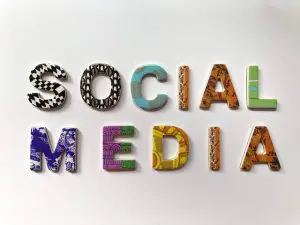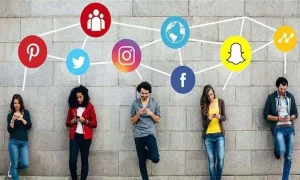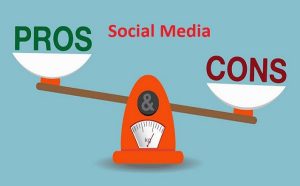Welcome to (International Stories). In this story, we will discuss 12 Advantages and Disadvantages of Social Media for Students. I hope you will like this article.
12 Advantages and Disadvantages of Social Media for Students
Social media has become an integral part of modern society, and its impact on students, both positive and negative, is significant. Here are some advantages and disadvantages of social media for students:
- Information Access: Social media platforms allow students to access a vast amount of information quickly and easily. They can stay updated with current events, research topics, and learn from educational content shared by experts.
- Networking Opportunities: Social media enables students to connect with peers, teachers, and professionals from around the world. These connections can lead to collaboration, mentorship, and future career opportunities.
- Enhanced Communication: Students can communicate with classmates and teachers outside of the classroom, discussing assignments, sharing study resources, and seeking clarification on topics.
- Promotes Creativity: Social media provides a platform for students to share their creative works, ideas, and projects. They can showcase their talents and receive feedback from a global audience, encouraging further creativity.
- Learning Communities: Students can join online groups or communities focused on their interests or academic subjects. These communities facilitate knowledge sharing, discussions, and mutual support.
Disadvantages:
- Distraction and Time Management: Social media can be highly addictive and often leads to distractions from academic responsibilities. It can affect time management, leading to reduced productivity and lower academic performance.
- Cyberbullying and Harassment: On social media sites, bullying or harassment of students is possible. Such traumatic events may be detrimental to their mental health and wellbeing.
- Privacy Concerns: Sharing personal information on social media can pose privacy risks, especially for young students who might not fully understand the consequences of oversharing.
- Comparison and Self-Esteem Issues: Constant exposure to carefully curated images and posts on social media can lead to feelings of inadequacy and negatively impact students’ self-esteem as they compare themselves to others.
- Misinformation and Fake News: Social media can be a breeding ground for the spread of misinformation and fake news. Students may struggle to distinguish between reliable sources and unreliable ones.
- Sleep Disturbance: Excessive social media usage, particularly before bedtime, can disrupt sleep patterns, leading to fatigue and decreased focus during classes.
To make the most of social media while mitigating its disadvantages, students should practice responsible usage, set boundaries, prioritize academic responsibilities, and be mindful of their mental health and online safety. Parents and educators also play a crucial role in guiding students towards healthy social media habits.
Social media has become an integral part of the lives of many students, offering both positive and negative effects on their academic, social, and emotional well-being. Here’s a breakdown of some of the positive and negative aspects:
Positive effects of social media for students:
- Connectivity and Networking: Social media allows students to connect and collaborate with peers, teachers, and experts from all over the world. This connectivity can enhance learning, facilitate group projects, and foster a sense of community.
- Access to Information: Students can access a vast amount of information and educational resources through social media platforms. Educational content, tutorials, and online courses are readily available, making it easier to supplement their formal education.
- Learning Opportunities: Social media can provide exposure to diverse perspectives and ideas, promoting critical thinking and expanding students’ knowledge beyond their immediate environment.
- Creativity and Expression: Many social media platforms encourage creative expression through posts, videos, and artwork. Students can showcase their talents, share their interests, and engage in creative discussions.
- Support Systems: Social media can serve as a support system for students facing academic challenges or emotional difficulties. Online communities and groups focused on specific topics can provide encouragement and guidance.
Negative effects of social media for students:
- Distractions and Time Management: Social media can be a significant distraction, leading students to spend excessive time scrolling through feeds instead of focusing on their studies. This can negatively impact their academic performance and time management skills.
- Cyberbullying and Online Harassment: Students can be subjected to cyberbullying, harassment, or social pressure on social media platforms, leading to emotional distress and mental health issues.
- Privacy Concerns: Sharing personal information on social media can pose privacy risks, especially when students are not cautious about their online presence. This may lead to potential security threats or misuse of personal data.
- Sleep Disruptions: Excessive use of social media, particularly before bedtime, can disrupt sleep patterns, affecting students’ overall well-being and academic performance.
- Social Comparison and Self-Esteem: Students may experience feelings of inadequacy or low self-esteem when comparing themselves to others’ curated online personas, leading to negative psychological effects.
- Reduced Face-to-Face Interaction: Excessive reliance on social media for communication may reduce face-to-face interactions and social skills development, impacting their ability to build meaningful relationships in the real world.
To mitigate the negative effects and maximize the positive impact of social media, students should practice responsible usage, set boundaries, and maintain a healthy balance between their online and offline lives. Additionally, parents and educators play a crucial role in guiding students towards using social media in a constructive and safe manner.
CONCLUSION:
Social media has both advantages and disadvantages for students, and it is essential to consider these factors to make informed decisions about its use. Here is a brief summary of the key points:
Advantages of Social Media for Students:
- Enhanced Communication: Social media platforms allow students to connect with their peers, teachers, and experts worldwide, facilitating communication and collaboration.
- Access to Information: Students can access a vast amount of information on educational topics, current events, and academic resources through social media platforms.
- Educational Opportunities: Social media can provide opportunities for online courses, webinars, and educational groups that can enhance students’ knowledge and skills.
- Creativity and Self-expression: Social media allows students to express themselves creatively through sharing art, writing, and other forms of content.
- Networking and Career Opportunities: Students can build professional networks, explore career opportunities, and connect with potential employers or mentors.
Disadvantages of Social Media for Students:
- Distraction and Time Management: Excessive use of social media can lead to distraction from academic responsibilities and negatively impact time management.
- Privacy Concerns: Students may expose themselves to privacy risks by sharing personal information and content on social media platforms.
- Cyberbullying and Mental Health: Social media can be a platform for cyberbullying and can affect students’ mental health if they experience negativity or comparisons to others.
- Reduced Face-to-Face Interaction: Heavy reliance on social media can lead to reduced face-to-face social interactions, potentially affecting communication and interpersonal skills.
- Academic Impact: Excessive social media usage can lead to a decline in academic performance if it interferes with studying and learning.
In conclusion, social media offers several benefits to students, such as improved communication, access to information, and networking opportunities. However, it also comes with potential drawbacks, including distractions, privacy concerns, cyberbullying, and negative impacts on mental health and academic performance. The key lies in using social media responsibly and striking a balance between its benefits and potential pitfalls. Educators, parents, and students should work together to promote safe and mindful use of social media to maximize its advantages while minimizing its negative effects.
FAQ:
What are disadvantages of social media for students?
Social media can offer many benefits to students, such as connecting with peers, accessing educational resources, and staying informed about current events. However, there are also several disadvantages associated with social media use, particularly for students:
- Time management: Social media can be highly addictive, leading students to spend excessive amounts of time scrolling through feeds or engaging in online interactions. This can detract from their academic responsibilities and reduce overall productivity.
- Distraction from studies: Constant notifications and the urge to check social media platforms can disrupt students’ focus and concentration while studying or doing schoolwork. This can negatively impact their learning and retention of information.
- Cyberbullying: Social media can be a breeding ground for cyberbullying, where students may experience harassment, humiliation, or negative comments from peers. Cyberbullying can have serious psychological effects and may even lead to academic decline and social isolation.
- Privacy concerns: Sharing personal information on social media can pose privacy risks for students. They may inadvertently reveal sensitive data, leaving them vulnerable to identity theft, cyberstalking, or other online threats.
- Comparison and self-esteem issues: Social media often presents a filtered and idealized version of people’s lives, leading students to compare themselves with others. This constant comparison can result in feelings of inadequacy, low self-esteem, and anxiety.
- Sleep disruption: Excessive use of social media, especially before bedtime, can disrupt students’ sleep patterns, leading to fatigue, reduced focus, and academic underperformance.
- Decreased face-to-face communication skills: Excessive reliance on social media for communication can hinder students’ ability to engage in meaningful face-to-face interactions, impacting their social skills and ability to build strong interpersonal relationships.
- Information reliability: Social media platforms can be a source of misinformation and fake news, leading students to accept false or biased information as fact. This can affect their critical thinking abilities and academic performance.
- Online predators: Students may be vulnerable to online predators who can use social media platforms to gain access to personal information and exploit them.
- Negative impact on mental health: Heavy use of social media has been associated with increased rates of anxiety, depression, and loneliness in some students, particularly when they experience cyberbullying or feel left out from online social circles.
To mitigate these disadvantages, students should practice responsible social media use and ensure they strike a balance between their online and offline lives. Educators and parents also play a crucial role in guiding students on using social media safely and responsibly.
What are the benefits of social media for students?
Social media can offer several benefits for students, both in their academic and personal lives. Here are some of the advantages:
- Enhanced communication: Social media platforms allow students to connect and communicate with their peers, teachers, and mentors easily. This can foster collaboration, facilitate group discussions, and enable timely feedback on academic and extracurricular activities.
- Access to educational resources: Many educational institutions and educators use social media to share valuable resources, such as articles, research papers, videos, and study materials. Students can access and benefit from these materials to complement their learning.
- Networking opportunities: Social media provides a platform for students to build and expand their professional networks. They can connect with potential mentors, industry professionals, and alumni, which may lead to internships, job opportunities, or career guidance.
- Information sharing and awareness: Social media is a valuable tool for staying updated on current events, news, and trends. It can also be a platform for spreading awareness about important social issues and causes.
- Community building and support: Students with shared interests or challenges can form online communities or support groups on social media. This fosters a sense of belonging and allows them to find support, share experiences, and exchange knowledge.
- Creativity and self-expression: Social media platforms often encourage creativity and self-expression. Students can showcase their artistic talents, writing skills, or other passions through various forms of content.
- Language and communication skills: Engaging with others on social media can help students improve their language and communication skills. It offers a chance to express ideas concisely, respond to different perspectives, and develop persuasive arguments.
- Cultural awareness and global perspective: Social media connects students with individuals from diverse backgrounds and cultures worldwide. This exposure enhances their cultural awareness, empathy, and understanding of global issues.
- Real-world experience: Many professions today require a solid understanding of social media. By using these platforms responsibly, students gain practical experience that can be valuable in their future careers.
However, it’s essential to recognize that using social media also comes with potential challenges, such as distractions, online safety concerns, and privacy issues. Encouraging responsible and mindful usage is crucial to maximize the benefits while minimizing the drawbacks.
What is advantage and disadvantages of social media?
Social media has had a significant impact on society, communication, and relationships. Like any technology, it comes with both advantages and disadvantages. Here are some of the key ones:
Advantages of Social Media:
- Connectivity: Social media enables people to connect with friends, family, and others around the world, fostering global communication and a sense of community.
- Information Sharing: It allows for the rapid spread of information, news, and ideas, making it easier for people to stay informed about current events and trends.
- Business Opportunities: Social media provides a platform for businesses to reach and engage with their target audience, enhancing marketing and promotional activities.
- Educational Resources: Social media platforms can be used as a source of educational content, connecting learners with valuable information, tutorials, and courses.
- Awareness and Activism: Social media has played a significant role in raising awareness about social issues and facilitating activism and social movements.
- Creativity and Expression: It gives individuals a platform to express themselves, share their creativity, and find like-minded communities.
Disadvantages of Social Media:
- Privacy Concerns: Social media platforms often collect and share personal data, leading to concerns about privacy breaches and data misuse.
- Cyberbullying and Trolling: Social media can be a breeding ground for cyberbullying and online harassment, negatively affecting mental health and self-esteem.
- Spread of Misinformation: False or misleading information can spread rapidly on social media, leading to the dissemination of inaccurate facts and opinions.
- Addiction and Mental Health Issues: Excessive use of social media has been associated with addiction and mental health problems like anxiety, depression, and low self-esteem.
- Filter Bubbles and Echo Chambers: Algorithms on social media can create filter bubbles, limiting exposure to diverse perspectives and leading to the reinforcement of existing beliefs.
- Time-Wasting: It’s easy to get absorbed in social media and spend excessive amounts of time scrolling, leading to reduced productivity and real-life social interactions.
- Comparison and Envy: Constant exposure to curated and idealized versions of others’ lives can lead to feelings of inadequacy, jealousy, and self-comparison.
Overall, social media can be a powerful tool when used responsibly and mindfully. However, it’s essential to be aware of the potential drawbacks and take steps to mitigate their negative effects. Finding a healthy balance in its usage can help maximize its advantages while minimizing the disadvantages.
What are 3 pros and 3 cons of social media?
Social media has profoundly impacted society in various ways, and while it offers several advantages, it also comes with some disadvantages. Here are three pros and three cons of social media:
Pros:
- Connectivity and Communication: Social media platforms have made it easier than ever for people to connect with friends, family, and acquaintances across the globe. It enables instant communication and fosters real-time interactions, breaking down geographical barriers and enhancing relationships.
- Information Sharing and Awareness: Social media is a potent instrument for instantly sharing information. It allows users to stay updated on current events, trends, and developments in various fields, including news, health, technology, and more.
- Networking and Business Opportunities: Social media has become a crucial platform for professionals and businesses to network, promote their services, and reach potential customers. It offers a cost-effective way to build a brand presence and engage with a broader audience.
Cons:
- Privacy and Security Concerns: Social media platforms collect vast amounts of user data, and this has raised concerns about privacy and security. Personal information can be misused or accessed by unauthorized parties, leading to identity theft, cyberbullying, or other harmful activities.
- Mental Health Impact: Excessive use of social media has been linked to negative mental health effects, such as increased feelings of anxiety, depression, loneliness, and decreased self-esteem. Comparing oneself to curated and idealized versions of others’ lives on social media can lead to unrealistic expectations and feelings of inadequacy.
- Spread of Misinformation: Social media can amplify the rapid spread of false or misleading information. Due to the lack of fact-checking and regulation on some platforms, misinformation can go viral, leading to significant consequences for public opinion, elections, and public health.
It is essential to recognize both the advantages and disadvantages of social media and use it responsibly, being mindful of its potential impact on individuals and society as a whole.


